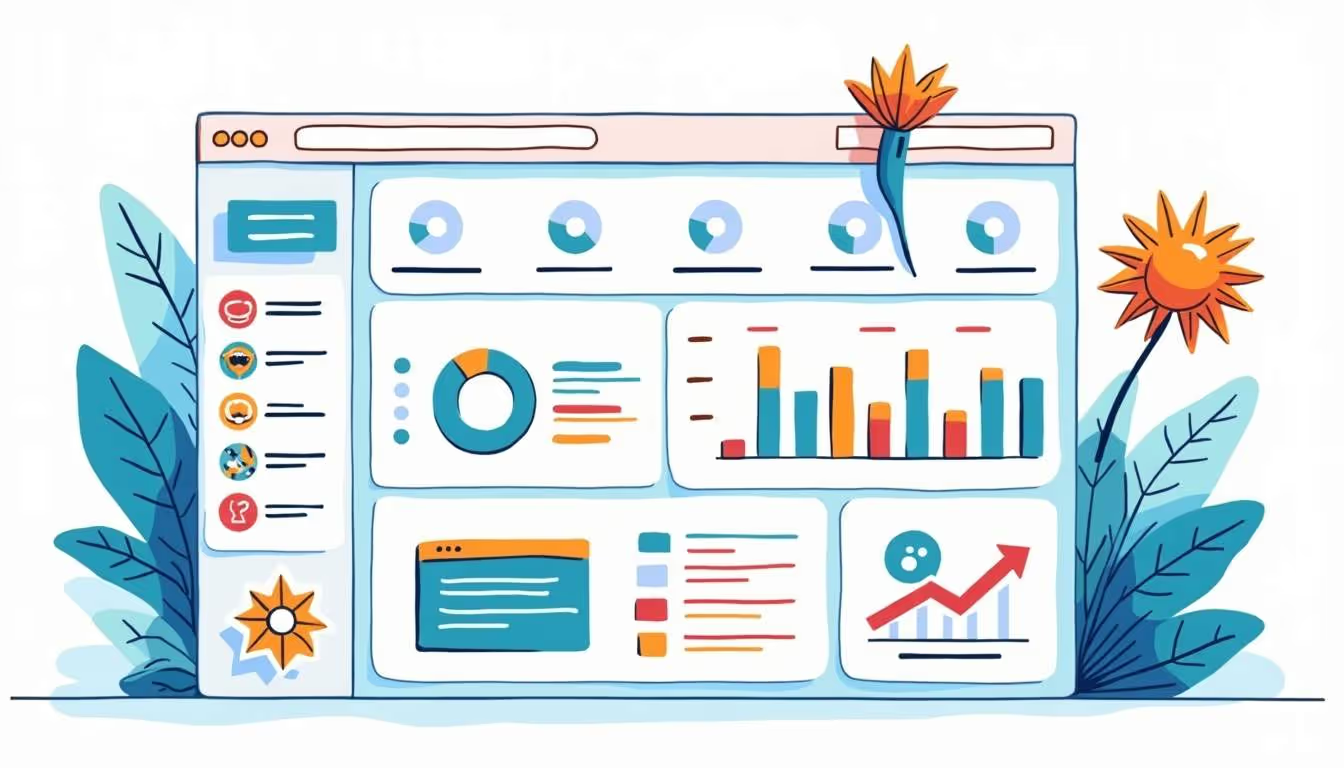Top Strategies for Growing Your Small Business in 2025
As the business landscape continues to evolve rapidly, small businesses face both unprecedented challenges and exciting opportunities. In 2025, growth will depend on more than just traditional marketing and operational tactics. It requires a strategic blend of technology adoption, customer-centric approaches, and agile business models. This comprehensive guide explores the top strategies that small business owners can implement to drive sustainable growth and stay competitive in the coming year.
Embrace Digital Transformation to Streamline Operations
Digital transformation is no longer optional for small businesses aiming to scale efficiently. Leveraging the right technology platforms can automate routine tasks, improve customer service, and provide valuable insights into business performance.

Invest in Industry-Leading Software Platforms
Modern software platforms designed specifically for service companies can drastically improve operational efficiency. For example, cloud-based project management tools, customer relationship management (CRM) systems, and invoicing software help businesses manage workflows seamlessly. According to a 2024 survey by Deloitte, 58% of small businesses that adopted integrated software solutions reported a 30% increase in productivity within the first year.
Choosing a platform that integrates multiple functions—such as scheduling, billing, and customer communication—reduces manual data entry and minimizes errors. This integration not only saves time but also enhances the customer experience by providing timely updates and transparent service tracking. Moreover, these platforms often come with mobile applications, allowing teams to collaborate in real-time, regardless of their location. This flexibility is particularly beneficial for businesses with remote or hybrid work models, as it fosters a culture of connectivity and responsiveness.
Leverage Data Analytics for Informed Decision-Making
Data is a powerful asset for small businesses. Utilizing analytics tools embedded within software platforms allows companies to monitor key performance indicators (KPIs), identify trends, and forecast demand. For instance, analyzing customer behavior can reveal upselling opportunities or highlight services that require improvement.
Small businesses that adopt data-driven decision-making are better positioned to allocate resources effectively and respond proactively to market changes. Gartner predicts that by 2025, 75% of small businesses will use AI-powered analytics tools to optimize their operations. Furthermore, these insights can lead to more personalized marketing strategies, enabling businesses to tailor their offerings to meet the specific needs of their target audience. By understanding customer preferences and behaviors, small businesses can create more engaging experiences, ultimately driving customer loyalty and retention.
Focus on Customer Experience to Build Loyalty and Referrals
In a competitive market, exceptional customer experience (CX) is a critical differentiator. Small businesses that prioritize CX not only retain customers but also benefit from word-of-mouth referrals, which remain one of the most effective growth drivers. A positive CX can lead to customers becoming brand advocates, sharing their experiences on social media and influencing potential buyers. This organic promotion can significantly reduce marketing costs while enhancing credibility, as recommendations from friends and family often carry more weight than traditional advertising.
Create Personalized Customer Journeys
Personalization goes beyond addressing customers by name. It involves tailoring communications, offers, and services based on individual preferences and past interactions. Advanced CRM systems enable businesses to segment their customer base and deliver targeted marketing campaigns that resonate deeply. By analyzing customer data, businesses can identify trends and preferences, allowing them to craft unique experiences that feel curated for each individual. This level of attention can transform a standard transaction into a memorable experience, fostering a deeper emotional connection with the brand.
According to Salesforce’s 2024 State of the Connected Customer report, 84% of customers say being treated like a person, not a number, is very important to winning their business. Small businesses that harness personalization can increase customer retention rates by up to 25%, directly impacting revenue growth. Moreover, personalized experiences can lead to higher average order values, as customers are more likely to purchase additional items when they feel understood and valued. This creates a win-win scenario where both the customer and the business benefit from a tailored approach.
Implement Omnichannel Communication Strategies
Customers expect to interact with businesses through multiple channels—whether it’s social media, email, phone, or live chat. An omnichannel approach ensures consistent and seamless communication across all touchpoints. Integrating these channels within a unified platform allows small businesses to respond quickly and maintain context, enhancing overall satisfaction. This means that if a customer starts a conversation on social media but later follows up via email, the business can pick up right where the conversation left off, providing a cohesive and efficient service experience.
Research from HubSpot shows that companies with strong omnichannel customer engagement strategies retain an average of 89% of their customers, compared to 33% for those with weak omnichannel efforts. Additionally, a well-executed omnichannel strategy can lead to increased customer lifetime value, as satisfied customers are more likely to return for repeat purchases. By ensuring that every interaction is meaningful and consistent, small businesses can cultivate lasting relationships that not only drive loyalty but also encourage customers to share their positive experiences with others, further amplifying the impact of their customer experience initiatives.
Expand Your Market Reach with Strategic Marketing
Marketing in 2025 requires a sophisticated approach that leverages both digital and traditional channels to maximize reach and engagement. Small businesses should focus on building brand awareness and generating qualified leads through targeted campaigns.
Utilize Content Marketing to Establish Authority
Content marketing remains a powerful tool for small businesses to demonstrate expertise and attract potential customers. Creating valuable, relevant content—such as blog posts, how-to guides, and video tutorials—helps build trust and positions the business as a thought leader in its industry.
For service companies, showcasing case studies and customer testimonials within content can be especially persuasive. According to Demand Metric, content marketing generates three times as many leads as outbound marketing and costs 62% less.
Invest in Local SEO and Paid Advertising
Local search engine optimization (SEO) is essential for small businesses targeting nearby customers. Optimizing Google My Business profiles, gathering positive reviews, and using location-specific keywords can significantly improve visibility in local search results.
Complementing SEO with paid advertising—such as Google Ads or social media promotions—allows businesses to target specific demographics and track campaign performance precisely. A recent report from WordStream indicates that businesses make an average of $2 in revenue for every $1 spent on Google Ads, highlighting the potential ROI of paid campaigns.
Build a Resilient and Agile Business Model
Resilience and agility are crucial for small businesses navigating the uncertainties of today’s economy. Being able to adapt quickly to changing market conditions, customer needs, and technological advancements can make the difference between stagnation and growth.
Adopt Flexible Work and Service Delivery Models
Remote work and virtual service delivery have become mainstream. Small businesses that embrace flexible work arrangements can attract top talent and reduce overhead costs. Additionally, offering virtual consultations or online booking options caters to customers’ growing preference for convenience.
According to a 2024 report from McKinsey, 70% of small businesses that implemented flexible service models saw a 20% increase in customer satisfaction and a 15% boost in revenue.
Continuously Innovate and Iterate
Innovation is not just for startups; small businesses must continually refine their products, services, and processes. Establishing feedback loops with customers and employees enables businesses to identify pain points and opportunities for improvement quickly.
Implementing agile methodologies—such as regular sprint reviews and rapid prototyping—can accelerate innovation cycles. This approach ensures that businesses remain relevant and responsive to evolving customer demands.
Leverage Strategic Partnerships and Networking
Collaboration can unlock new growth avenues for small businesses. Forming strategic partnerships and actively engaging in networking opportunities expands reach, resources, and expertise.

Partner with Complementary Businesses
Identifying non-competing businesses serving a similar target audience can lead to mutually beneficial partnerships. For example, a landscaping company might partner with a local hardware store to offer bundled services or joint promotions.
These alliances can increase brand exposure and provide access to new customer segments without significant marketing spend. According to the Small Business Administration, 60% of small businesses that formed strategic partnerships reported accelerated growth within two years.
Engage in Industry Associations and Community Events
Active participation in industry groups and local events fosters credibility and trust. Networking with peers and potential clients can lead to referrals, collaborations, and valuable insights into market trends.
Moreover, community involvement enhances brand reputation and demonstrates commitment to local economic development, which resonates strongly with customers who prioritize supporting local businesses.
Prioritize Financial Health and Smart Investment
Sound financial management underpins sustainable growth. Small businesses must maintain healthy cash flow, control costs, and make strategic investments aligned with long-term objectives.
Implement Robust Financial Planning and Monitoring
Utilizing financial management software that integrates with operational platforms provides real-time visibility into revenues, expenses, and profitability. This transparency enables proactive management of cash flow and timely identification of financial risks.
Regular budgeting and forecasting help businesses prepare for seasonal fluctuations and unexpected expenses. According to QuickBooks, 82% of small businesses that engage in monthly financial reviews report better financial outcomes.
Invest in Growth-Oriented Initiatives
Allocating resources to marketing, technology upgrades, employee training, and product development drives competitive advantage. However, investments should be data-driven and aligned with measurable goals to ensure maximum return.
For example, investing in an advanced customer management platform may initially increase costs but can lead to higher customer retention and revenue growth over time.
Conclusion
Growing a small business in 2025 demands a holistic and forward-thinking approach. By embracing digital transformation, prioritizing customer experience, executing strategic marketing, fostering agility, leveraging partnerships, and maintaining financial discipline, small businesses can unlock new growth opportunities and build lasting success.

Staying informed about emerging trends and continuously adapting strategies will empower small business owners to thrive in an increasingly competitive marketplace. The future belongs to those who combine innovation with a deep understanding of their customers and operational excellence.








